Apogee Hype MiC Review
Long-Term Test
Lee esta reseña en español
Apogee’s Hype MiC recently emerged from a long-term test by FutureMusic just before the world was seized by the Coronavirus. We utilized four different reviewers to evaluate Apogee’s versatile USB microphone made for Mac, PC and Smartphone – their comments in quotes below. The Hype MiC is a premium version of Apogee’s MiC USB microphone platform and includes several noteworthy enhancements that place it above their MiC and MiC+.
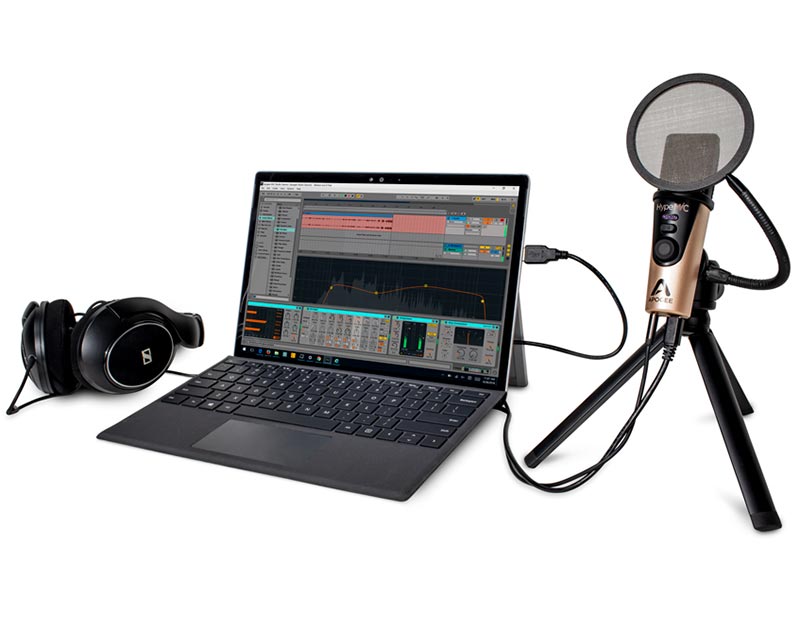
At $349, the Apogee Hype MiC is near the top of the entire USB microphone market, but it does include many accessories, which makes it more of a kit, rather than a single mic purchase. Another important note is that the Hype MiC can easily be used with a smartphone, as opposed to being confined to just computer use. We tested it on Apple iPhone’s, employing Apogee’s excellent MetaRecorder iOS app, which instantly upgrades to the full version when attaching a Hype MiC for the first time. This provide additional value to the Hype MiC and supports Apogee’s tag line: “One Mic To Rule Them All.”
Included in the Hype MiC package is a solid, well-constructed tripod, a ball-type mini tripod head with a 1/4 – 20 screw, three different cables for connectivity, a mini-pop filter, and a high-quality, custom foam-padded carrying case. The tripod and ball-head have been completely revamped from the MiC Plus, addressing several key stability issues. “I cannot possibly express what a huuuuuuuuge improvement the Hype MiC’s tripod and head are over the original MiC’s. It’s so solid and stable, that I’ve also been using it to support my [DJI] Osmo 4K camera,” stated one evaluator. Even after months of hard use by our evaluators, when the Hype MiC returned to our offices the tripod and head were as solid as the first day they were unboxed.
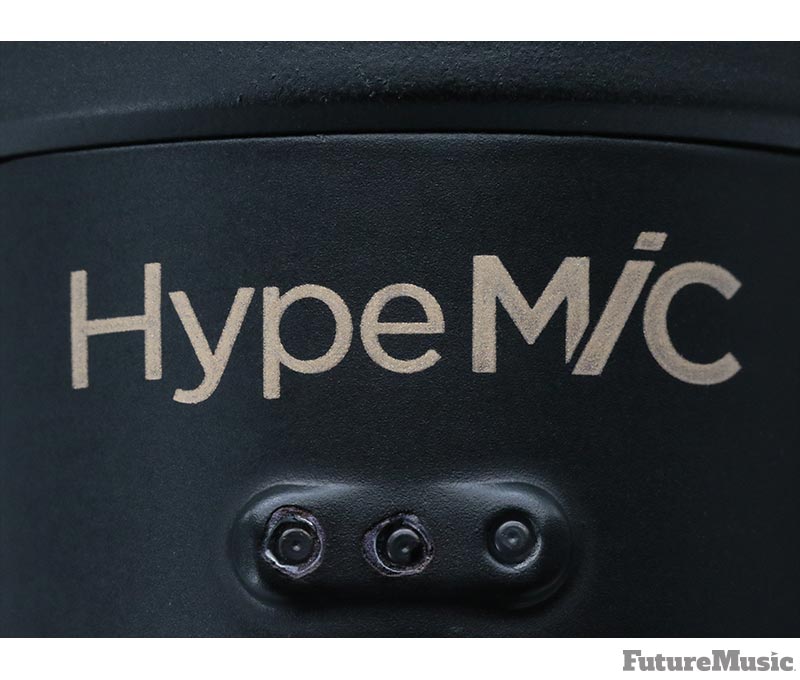
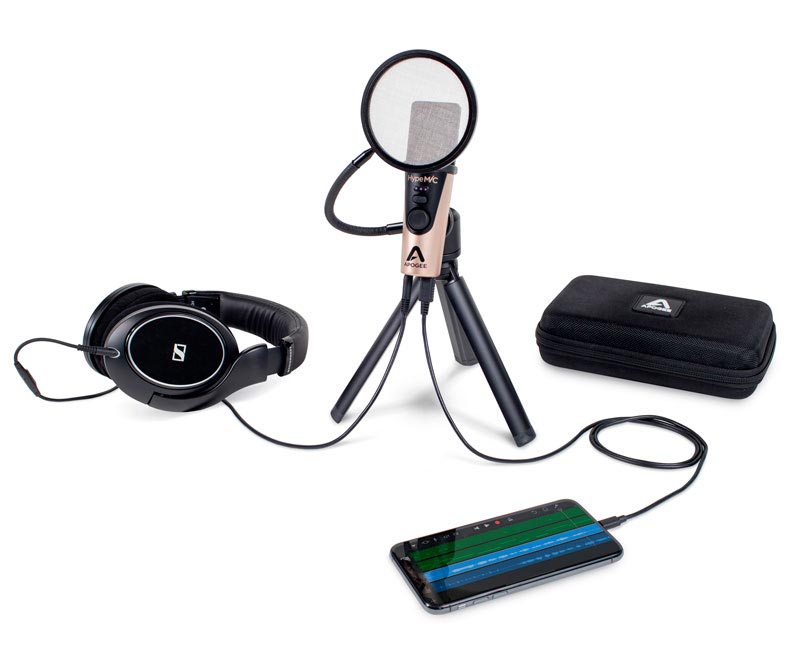
The Apogee Hype MiC includes three different cables for connectivity to the micro USB port at the bottom of the Hype MiC: a designated iOS Lightning cable, a USB-C cable, and a USB-A cable. The other interesting addition is the inclusion of a small pop filter. It’s just big enough to cover the Hype MiC’s small grill, and features an adjustable gooseneck arm for positioning it precisely. It attaches to the tripod, between the ball-head and the legs and can be easily removed for field recordings. The pop filter didn’t fair so well over our extended test with the gooseneck loosing rigidity and the rubber covering the arm peeling off. “I didn’t find the pop filter to be much use,” confided one reviewer, “it barely covers the condenser and tends to get in the way. [In addition,] I didn’t notice much difference in combating plosives, since the protective grill does a solid job over typical computer audio distances.”
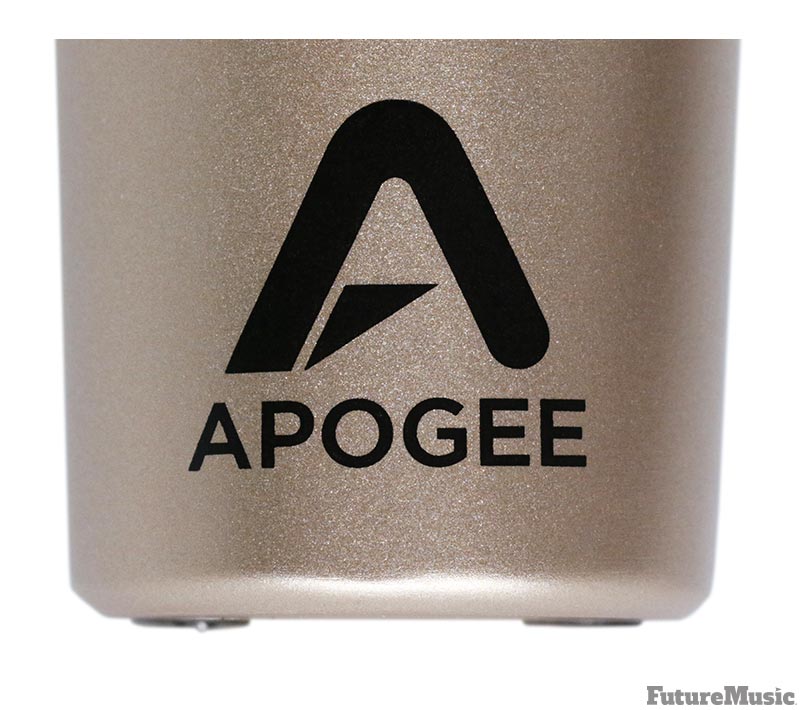
Apogee Hype MiC Features and Specs:
» Cardioid condenser microphone capsule
» PureDIGITAL connection up to 24-bit/96kHz resolution
» Headphone output with Blend feature offers zero latency recording
» No configuration required, just plug in and record with any audio app
» Compatible with iOS, Mac and PC
» Analog compressor
» Includes tripod, pop filter and carrying case
» Includes Micro-USB to USB-C cable; Micro-USB to USB-A cable; Micro B-to-Lightning cable
» Max SPL: 130dB (1% THD at 1kHz)
» Sensitivity: -36 dBfs (94 dB SPL. 1 kHz)
» Noise level: -108dBfs (A) at 0 dB gain
» Max gain of preamp: 46 dB
» Length: 4.88″ (124 mm)
» Width: 1.5″ (38 mm)
» Depth: 1.5″ (38 mm)
» Weight: 0.45 lbs (0.20 kg)
If you can’t tell already from the pictures, the Apogee Hype MiC is much smaller than the majority of its competitors. It’s only 1.5 inches wide (38mm), just under 5 inches tall (124mm) and weighs about half a pound (0.20 kg). This means it won’t take up too much space on your desk or get in you way, but it also lends itself to smartphone field recording. For electronic music producers who are always on the lookout for new sounds, the small size and portable nature of the Hype MiC means that you can toss it into your backpack and be ready at a moments notice to capture dynamic sounds in any environment. Our evaluators tested the Hype MiC with other iOS recording software, including Apple’s own Music Memos and Voice Memos, but found Apogee’s excellent MetaRecorder worked best as far as fidelity and ease-of-use. As mentioned before, simply attaching the Hype MiC to your iPhone and launching MetaRecorder bumps the app to the full version (eliminating the 60 seconds of recording time restriction). The mic features three multicolor LEDs on the front, a micro jog wheel and a button for selecting Blend, the balance of mic input to the computer output, or the three available compression settings. On the bottom is the Micro USB input and a 3.5mm headphone jack for no latency monitoring.
So How Does It Sound?
The Apogee Hype MiC records up to 24-bit / 96kHz quality with its built-in circuitry, unlike other USB mics on the market which claim high fidelity, but use DSP to achieve that claimed resolution. The audio quality is excellent and the onboard preamp provides up to 46 dB of gain. The three LED’s showcase the amount of signal the mic is accepting. The gain on the Hype MiC is quite powerful and it’s very easy to distort. All of our testers concurred to just to have the second green LED popping on peaks. Our evaluators were quite pleased with the results using the Hype MiC as a voice over microphone. “I was traveling to visit my sister’s family in another state and happen to have brought the Hype MiC to record ambient airport sounds for a personal project when I received a call from a client in need of a special intro for their company’s podcast. Normally, I would have to find a local studio to pop in, but instead I told them to send over the copy. When I got to my sisters, I escaped to the basement and recorded the audio with the Hype MiC. With just a bit of additional gain and no compression, I was able to achieve a stellar result and my client was thrilled at the quality and turnaround,” revealed one reviewer.

For a limited time only! Up to 80% off all Waves Bundles. PLUS use Waves promo code “CK901” for an additional 10%! This is Waves best deal yet! Get yours today before this special ends! GO!
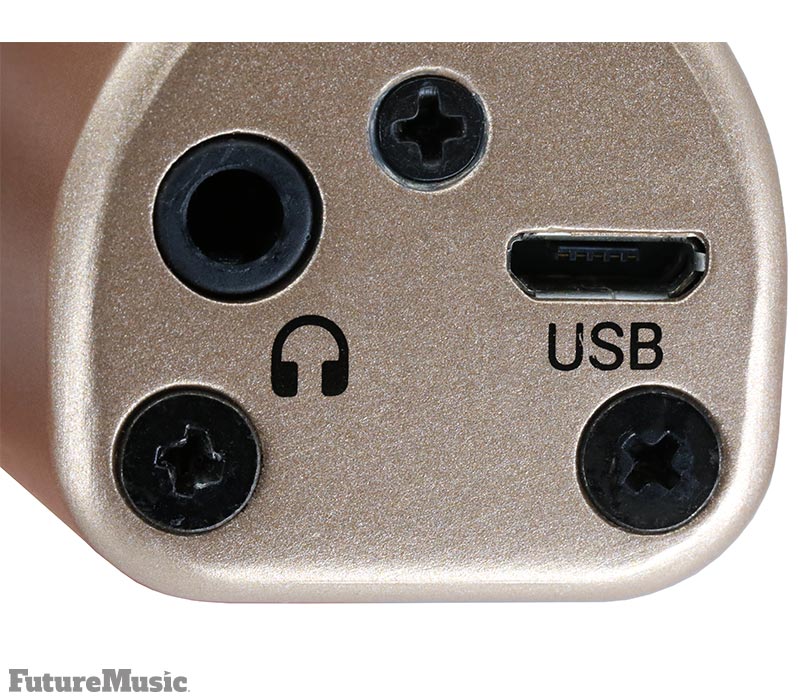
Unfortunately, the Hype MiC’s compression, which is this model’s big selling point, did not live up to the marketing, well, hype. There are only three settings available, Shape, Squeeze and Smash. All of our reviewers stated that the Smash setting was “essentially unusable.” Strange, since Apogee feels that this setting would be best for Podcasting. “Honestly, I not sure exactly what Apogee was thinking with these compression settings. Squeeze and Smash sound flat out terrible and Shape is almost useable, if you turn the gain way down. Frankly, the mic sounds really solid and planted without the compression,” commented one reviewer, “so I never used it again.”
Another stated, “[the compression] was a real disappointment…I was excited to see how this would affect vocals, as well as percussion, but neither of the three settings were satisfactory.” Finally, “for vocals, I feel subtle compression works best,” stated the third reviewer, “but the Hype MiC’s compression just bastardized the character.” All commented that Apogee should consider forgoing the three settings and just employ the jog wheel to ramp up the compression from null to heavy in the next incarnation of the Hype MiC, allowing users to find the precise amount of squeeze for their application.
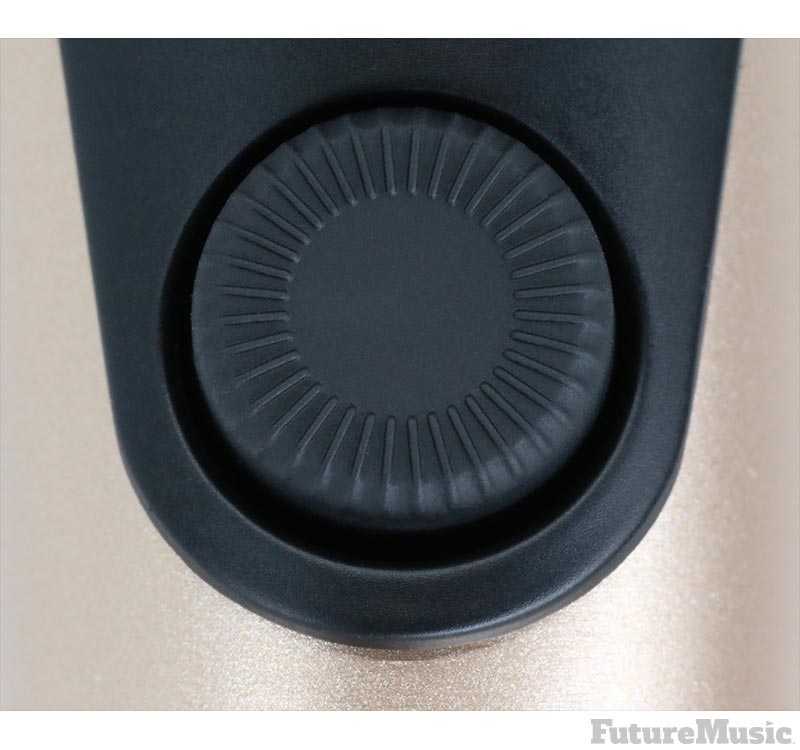
Conclusion
Apogee’s Hype MiC’s recording capabilities, sound quality and robust accessories set it apart from other dedicated USB microphones in the market, but for $349 we’re surprised the compression didn’t meet Apogee’s usual high standards. While we can’t wholeheartedly recommend the Hype MiC, would can suggest looking into Apogee’s MiC+ – which doesn’t have the compression, nor the enhanced accessories, but does sound great, is very portable, works with your smartphone and will save you almost $100.
Rating: 80%
Cheers:
+ Build Quality
+ Sound Quality
+ Excellent Accessories
+ Works With Your Smartphone
+ Great Metarecorder App
Jeers:
– Compression
– Price

Apogee’s Hype MiC costs $349 and is available now.
Click To Tweet — Read the Apogee Hype MiC Review by @Future_Music

The Future:
Apogee needs to revisit how the analog compression is implemented in the Hype MiC, if it intends to make it more than just a bullet point in their marketing materials. Our reviewer’s suggestion of forgoing the three designated settings and allowing the user to dial up the amount of compression with the jog wheel sounds like a good start, but it’s overall sonic signature must be reconfigured for vocal applications to sound more natural and transparent.






